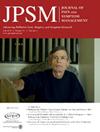共同设计间皮瘤的生活质量调查:定性和认知访谈结果。
IF 3.5
2区 医学
Q2 CLINICAL NEUROLOGY
引用次数: 0
摘要
背景:间皮瘤是一种罕见的、无法治愈的侵袭性癌症,缺乏间皮瘤(PLM)患者的“患者报告预后”(PRO)数据。目的:研究PLM在回答生活质量和护理调查草案时对认知过程的看法,为澳大利亚维多利亚间皮瘤结局登记处(VMOR)的调查改进和实施提供信息。方法:建构主义(定性)和共同设计研究。专家制定的PRO调查草案包括:EORTC QLQ-C30健康相关生活质量问题集、澳大利亚医院患者体验问题集(AHPEQS)和人口统计学/间皮瘤背景问题。电话半结构化访谈和“自言自语”访谈考察了PLM在回答过程中的调查观点和认知过程。同时进行归纳主题分析(调查观点)和演绎内容分析(认知过程)。结果:PLM认为调查将产生对改善PLM医疗保健的重要信息,但提出了许多内容和布局建议,以减少被调查者的困惑、不恰当的回答和负担。强烈建议使用自由文本响应选项。调查内容一般不令人痛苦,但可能引起挑战性的记忆和需要支持。几个PLM在调查回答过程中表现出执行认知过程的挑战,特别是关于EORTC-QL30是指一般健康还是仅与间皮瘤相关的健康,以及AHPEQS指的是哪种医院护理经历。结论:一项完善的共同设计的VMOR PRO调查应该产生对患者有意义的定性和定量证据,以指导注册中心的领导在哪些问题对患者及其临床团队重要。虽然共同设计的“观点寻求”和认知访谈研究可以提高有效的调查结果,但PRO的反应也可能受到外部环境的影响,包括合并症。本文章由计算机程序翻译,如有差异,请以英文原文为准。
Co-Designing a Quality of Life Survey for Mesothelioma: Qualitative and Cognitive Interview Findings
Context
Mesothelioma is a rare, incurable, and aggressive cancer and “patient-reported outcome” (PRO) data from people living with mesothelioma (PLM) are lacking.
Objectives
To examine PLM’s views about, and cognitive processes whilst answering, a draft quality of life and care survey, to inform survey refinements and implementation into the Victorian Mesothelioma Outcome Registry (VMOR), Australia.
Methods
Constructivist (qualitative) and co-designed study. An expert-developed draft PRO survey comprised the: EORTC QLQ-C30 health-related quality of life question-set, Australian Hospital Patient Experience Question Set (AHPEQS), and demographic / mesothelioma background questions. Telephone semi-structured and “think aloud” interviews examined PLM’s survey views and cognitive processes during responses. Concurrent inductive thematic analysis (survey views) and deductive content analysis (cognitive processes) proceeded.
Results
PLM believed that the survey would produce information important for improving PLM healthcare but made many content and layout suggestions to reduce respondent confusion, inappropriate answers, and burden. Free-text response options were strongly recommended. Survey content was generally nondistressing but could elicit challenging memories and need for support. Several PLM displayed challenges in executing cognitive processes during survey responses, notably on whether EORTC-QL30 referred to general or mesothelioma-only related health and which hospital care experience the AHPEQS referred to.
Conclusion
A refined co-designed VMOR PRO survey should yield patient-meaningful qualitative and quantitative evidence to guide the Registry’s leadership in what issues are important to patients and their clinical team. While co-designed “viewpoint seeking” and cognitive interviewing studies can improve valid survey outcomes, PRO responses may also be affected by extraneous circumstances, including comorbidities.
求助全文
通过发布文献求助,成功后即可免费获取论文全文。
去求助
来源期刊
CiteScore
8.90
自引率
6.40%
发文量
821
审稿时长
26 days
期刊介绍:
The Journal of Pain and Symptom Management is an internationally respected, peer-reviewed journal and serves an interdisciplinary audience of professionals by providing a forum for the publication of the latest clinical research and best practices related to the relief of illness burden among patients afflicted with serious or life-threatening illness.

 求助内容:
求助内容: 应助结果提醒方式:
应助结果提醒方式:


